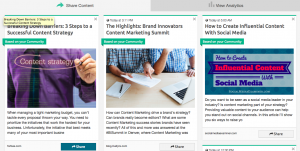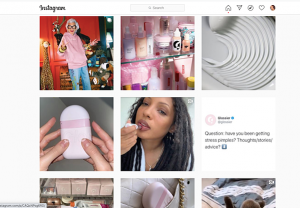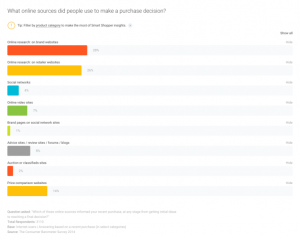
For many marketers, no matter the title or industry, coming up with the next creative marketing campaign idea can be a struggle.
There are a bunch of ways marketers can come up with ideas – you can tie into pop culture, riff off something in the news, set up a few epic brainstorming sessions, or connect your marketing concepts to seasonal themes and holidays.
The holidays and seasons can be particularly powerful, because there are holidays going on all around us all the time – full of emotional and psychological significance for our audiences.
Holidays can serve as amazing hooks to get your audience interested. When you’re creating an email, blog, or social post, holidays provide a reason to reach out and grab your prospects’ attention.
Marketers are always on the lookout for a reason to engage our audience – why not engage with them on topic they are already thinking or talking about?
We put together a webinar diving into this very topic, which you can access on-demand here. We covered how to select the right holiday for your brand; how to create compelling content around that holiday; and how to design your campaign for success.
We’ll be recapping each section on the blog over the next few weeks – this is the first installment.
 A Natural Connection
A Natural Connection
Marketing around the holidays comes down to connecting your brand to themes, emotions, and concepts your audience might be thinking about at different points throughout the year.
You’ll need to know your brand personality as well as the sensibilities of your buyer personas to pick the right holiday and the right approach. Holidays can be just the inspiration you need to come up with your next great marketing campaign idea!
But how do you go about choosing the right holiday for your company? How do you know what will resonate and what will fall flat?
There are three primary reasons a brand might choose to market around a given holiday.
- The brand has a direct relationship with the holiday.
- The brand’s target audience has a relationship with the holiday.
- The brand’s has an indirect relationship with the holiday, through brand personality/identity and interests.
If you can’t connect your brand through one of these avenues to the holiday you’re considering, it’s probably not a great fit for a marketing campaign.
Here’s a closer look at how to use these strategies to identify the right holiday for your campaign.
1. Direct Relationship
The first approach is to choose a holiday with which your brand has a direct relationship. By this we mean something like a solar panel company marketing around Earth Day, or a dog groomer marketing to National Dog Day (August 26!).
A short brainstorming session should yield the types of holidays that make sense for your brand.
Questions to ask:
- What is your brand known for?
- Are there any obscure holidays that match up to your messaging?
- What are the key messages of mainstream holidays, and could they map to your brand messaging?
2. Audience Relationship
The second way to select a holiday is to identify where your target audience has a special interest in or relationship with a holiday. A solar panel company might know their audience also cares about organic food or recycling, and could market to a holiday like Make a Difference Day on October 24.
A brand could also take a niche audience approach for certain holidays. For example, a pen company could create a campaign around Left-Handers Day (August 13) all about the unique challenges left-handed people face and how their special quick-drying ink pens don’t smudge while you’re writing.
For this step, you have to know your audience pretty well. What are their likes and dislikes? Do they have pets or children? What do they do for fun? This is a kind of advanced buyer personas exercise, and can benefit your marketing beyond tying into holidays.
Questions to ask:
- What is your target audience for this campaign?
- What do they care about?
- What’s unique or quirky about them that you could connect to a holiday?
- What messaging angles have been effective with this audience in the past?
3. Brand Interest

Finally, a brand has its own interests and personality — our favorite solar panel example company could identify with “innovation” or “clean tech,” and could market around Thomas Edison’s birthday (February 11) or the anniversary of the first moon landing (July 20).
Questions to ask:
- What words or concepts describe your brand?
- What do you want your brand to be associated with?
- How is your brand perceived by your audience and in the marketplace?
See It In Action

Here’s a great example around Valentine’s Day. While it doesn’t make a ton of sense to write a white paper on your brand’s take on Valentine’s Day, what about a relationship-themed quiz?
DemandGen is a global consulting firm that helps companies set up marketing automation and CRM systems. They created a “Sales & Marketing Relationship” assessment to benchmark their audience on sales/marketing alignment. The relationship theme made this piece of content a great fit to promote around Valentine’s Day, but it’s also a piece of evergreen content that will continue to speak to an issue that’s very important for their target audience. This is a great example of a brand with a direct relationship to a holiday executing a quick-hit campaign with lasting results.
Stay tuned for the next installment in our webinar recap series: selecting the right content for your holiday campaign.
Ready to get started marketing around a holiday? Download this Ideation Workbook to select a holiday and get going on a demand gen campaign for any season.
This piece was originally published on the SnapApp blog.
(249)







